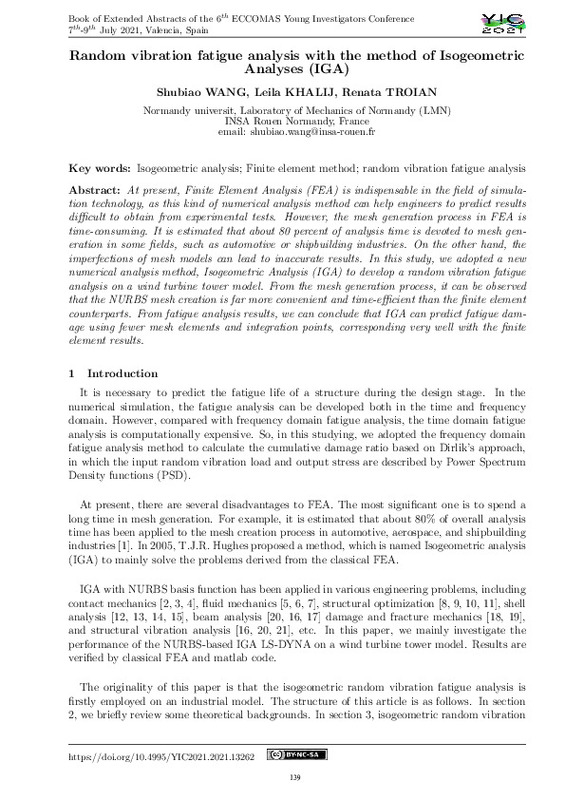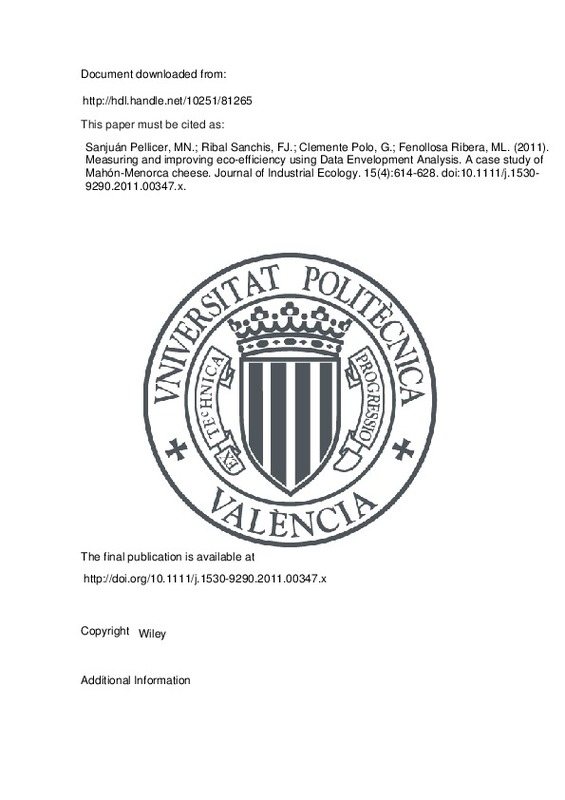JavaScript is disabled for your browser. Some features of this site may not work without it.
Buscar en RiuNet
Listar
Mi cuenta
Estadísticas
Ayuda RiuNet
Admin. UPV
Random vibration fatigue analysis with the method of Isogeometric Analysis (IGA)
Mostrar el registro sencillo del ítem
Ficheros en el ítem
| dc.contributor.author | Wang, Shubiao
|
es_ES |
| dc.contributor.author | Khalij, Leila
|
es_ES |
| dc.contributor.author | Troian, Renata
|
es_ES |
| dc.date.accessioned | 2022-09-27T12:48:34Z | |
| dc.date.available | 2022-09-27T12:48:34Z | |
| dc.date.issued | 2022-05-11 | |
| dc.identifier.isbn | 9788490489697 | |
| dc.identifier.uri | http://hdl.handle.net/10251/186613 | |
| dc.description.abstract | [EN] At present, the Finite Element Analysis (FEA) method is indispensable in the field of simulation technology, as this kind of numerical analysis method can help engineers to predict results, whic hare often difficult to obtain from experimental tests. However, the problem is that during the mesh generation process in FEA, it is required to spend a long time. It is estimated that about 80 percent of analysis time are devoted to mesh generation in some fields, such as automotive or shipbuilding industries. On the other hand, the imperfections of mesh models can lead to inaccurate problems. Inthis studying, we adopted a new numerical analysis method, Isogeometric Analysis (IGA) to develop a random vibration fatigue analysis. Two different numerical models were developed inLs Dyna software with IGA and FEM analysis: a plate with a hole and a wind turbine tower model.Convergence analyses were developed to investigate the differences in the aspect of computation time, maximum stress, etc. From the convergence analysis, it was shown that IGA and FEA convergence analyses provide similar maximum stress values, in which IGA is more time-efficientcompared with FEA. Secondly, isogeometric random vibration fatigue analysis was developed on the models. The objective was to compare the fatigue analysis results by IGA with the ones of FEA. In terms of fatigue analysis, IGA can predict the fatigue life using fewer NURBS elements and integration points in the thickness direction, which corresponds very well to the fatigue life computed by FEA. | es_ES |
| dc.format.extent | 10 | es_ES |
| dc.language | Inglés | es_ES |
| dc.publisher | Editorial Universitat Politècnica de València | es_ES |
| dc.relation.ispartof | Proceedings of the YIC 2021 - VI ECCOMAS Young Investigators Conference | |
| dc.rights | Reconocimiento - No comercial - Compartir igual (by-nc-sa) | es_ES |
| dc.subject | Numerical analysis | es_ES |
| dc.subject | Isogeometric Analysis | es_ES |
| dc.subject | Finite Element Method | es_ES |
| dc.subject | Random vibration fatigue analysis | es_ES |
| dc.title | Random vibration fatigue analysis with the method of Isogeometric Analysis (IGA) | es_ES |
| dc.type | Capítulo de libro | es_ES |
| dc.type | Comunicación en congreso | es_ES |
| dc.identifier.doi | 10.4995/YIC2021.2021.13262 | |
| dc.rights.accessRights | Abierto | es_ES |
| dc.description.bibliographicCitation | Wang, S.; Khalij, L.; Troian, R. (2022). Random vibration fatigue analysis with the method of Isogeometric Analysis (IGA). En Proceedings of the YIC 2021 - VI ECCOMAS Young Investigators Conference. Editorial Universitat Politècnica de València. 139-148. https://doi.org/10.4995/YIC2021.2021.13262 | es_ES |
| dc.description.accrualMethod | OCS | es_ES |
| dc.relation.conferencename | VI ECCOMAS Young Investigators Conference | es_ES |
| dc.relation.conferencedate | Julio 07-09, 2021 | es_ES |
| dc.relation.conferenceplace | Valencia, España | es_ES |
| dc.relation.publisherversion | http://ocs.editorial.upv.es/index.php/YIC/YIC2021/paper/view/13262 | es_ES |
| dc.description.upvformatpinicio | 139 | es_ES |
| dc.description.upvformatpfin | 148 | es_ES |
| dc.type.version | info:eu-repo/semantics/publishedVersion | es_ES |
| dc.relation.pasarela | OCS\13262 | es_ES |










